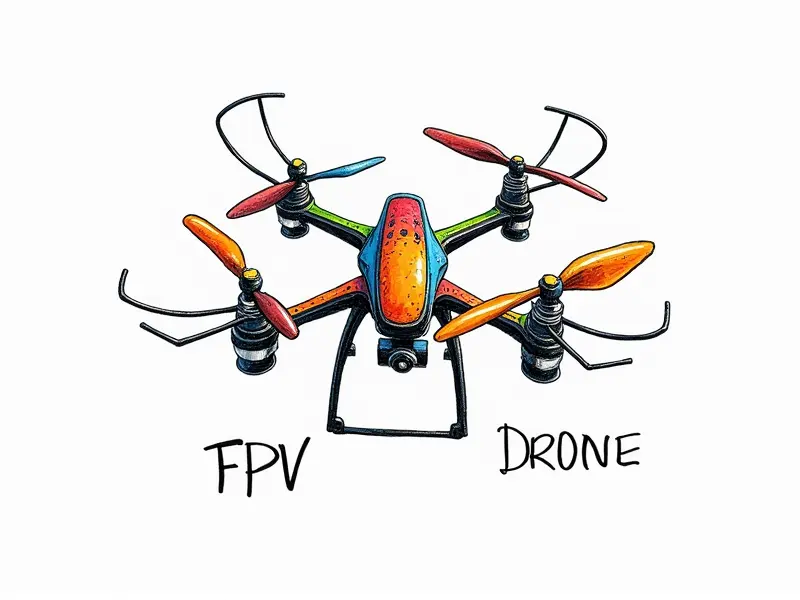What is a radio transmitter?

Understanding RC Transmitters
A radio transmitter, commonly known as an RC (Radio Control) transmitter in the context of model aircraft and vehicles, is a critical component in remote control systems. It serves as the primary interface between the operator and the device being controlled, such as drones, airplanes, cars, or boats. This article delves into the intricacies of RC transmitters, providing insights for both beginners and experienced users.
How Do RC Transmitters Work?
The functionality of an RC transmitter is based on radio frequency (RF) technology. When you move a control stick or press a button on your transmitter, it sends signals to the receiver installed in the device being controlled. These signals are encoded and transmitted through specific frequencies allocated for hobby use.
Beginner's Guide to RC Transmitters
If you're new to the world of remote-controlled devices, understanding how an RC transmitter works is crucial. Start by familiarizing yourself with basic controls such as throttle, elevator, aileron, and rudder (for aircraft) or steering, acceleration, braking, and reversing (for vehicles).
Essential Features of RC Transmitters
- Channels: The number of channels determines how many control inputs the transmitter can send simultaneously. Common ranges are 2-channel to 16-channel.
- Built-in Trainer Port: Allows a second person (trainer) to take over control during flight training sessions.
- Voltage Display: Shows battery voltage, ensuring you don't run out of power mid-flight or operation.
Choosing the Right RC Transmitter
Selecting an appropriate transmitter depends on your specific needs. Consider factors such as the number of channels required, type of device being controlled (e.g., aircraft, car), and whether you need additional features like telemetry for real-time data.
Top 5 RC Transmitters for Beginners
- HobbyZone Sportytec: Ideal for beginners with its user-friendly interface and basic functions.
- Tarot X9E: Offers a wide range of channels and advanced features suitable for intermediate users.
- Hitec Max DSMR Transmitter: Provides excellent signal reliability and long-distance control capabilities.
- FlySky FS-i6X: Known for its affordability and ease-of-use, making it a popular choice among beginners.
- DJI Taranis X9D Plus: A high-end option with superior performance and additional features like telemetry support.
Mastering RC Transmitter Controls
Becoming proficient in using your transmitter is essential for optimal control of your device. Practice regularly by setting up different scenarios and adjusting settings to suit various conditions.
RC Transmitter Basics Explained
The basic components of an RC transmitter include:
- Control Sticks: Moveable sticks that send signals based on their position.
- Trim Adjustments: Fine-tune the control surfaces to correct any imbalances in your device.
- Mixers and Function Buttons: Allow for complex maneuvers by combining multiple channels.
What Every Pilot Needs to Know About Transmitters
Pilots must understand transmitter settings, such as mixing functions and travel adjustments, which can greatly enhance flight performance. Additionally, learning about failsafe features is crucial to ensure safety during flights.
The Role of RC Transmitters in Flying
RC transmitters play a pivotal role in aviation by enabling precise control over aircraft movements from the ground. They allow pilots to execute maneuvers with accuracy and finesse, making them indispensable for both recreational and competitive flying.
Essential Tips for RC Transmitters
- Maintain Proper Battery Levels: Ensure your transmitter's battery is fully charged before each use.
- Regular Calibration: Periodically calibrate your transmitter to maintain optimal performance.
- Keep Software Updated: Stay informed about firmware updates and install them as needed for enhanced functionality.
Conclusion
Mastery of RC transmitters is crucial for anyone venturing into the world of remote-controlled devices. By understanding their workings, choosing the right model, and mastering essential controls, you can significantly enhance your experience whether you're a beginner or an experienced user. Remember to keep your transmitter well-maintained and up-to-date for peak performance.

